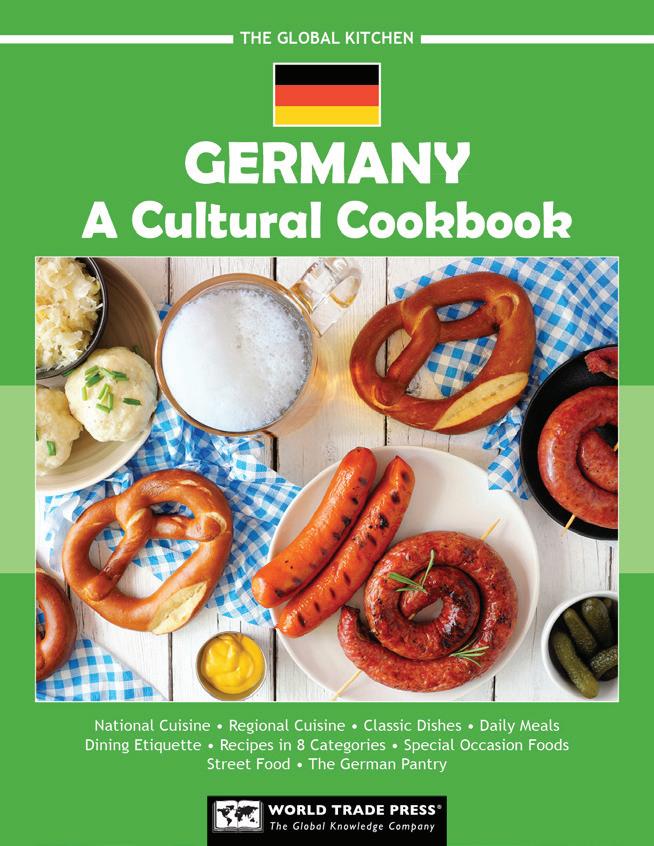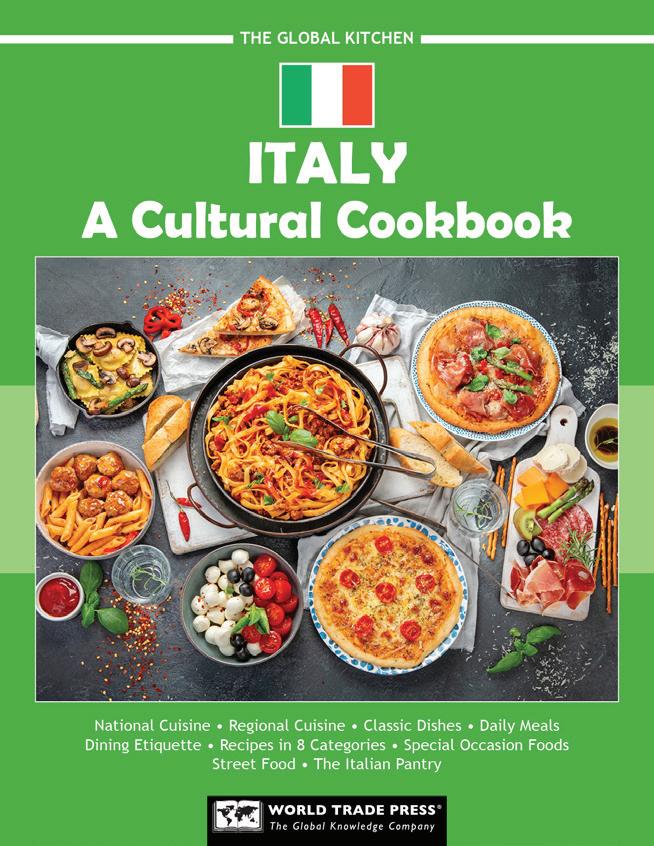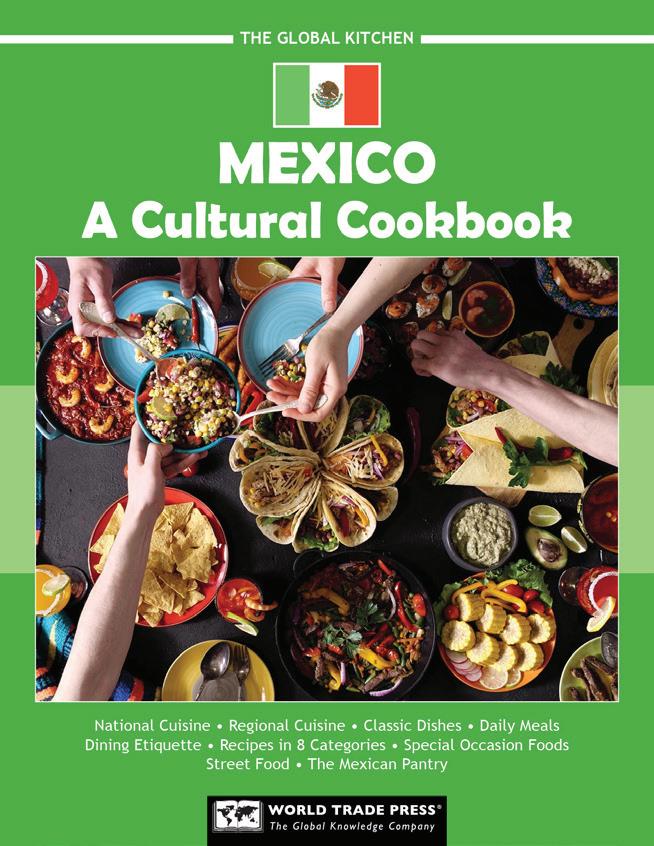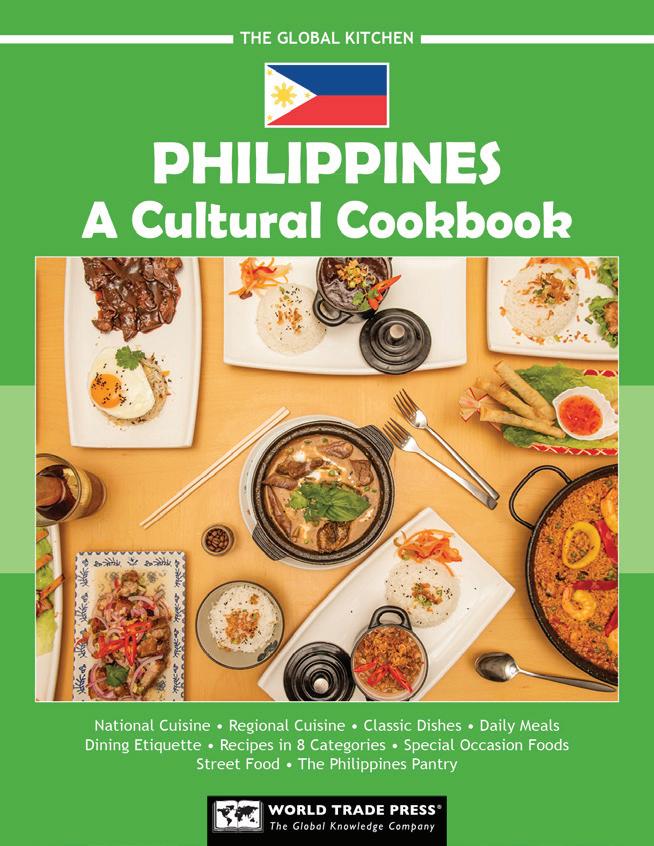THE GLOBAL KITCHEN

THE GLOBAL KITCHEN SERIES

THE GLOBAL KITCHEN

THE GLOBAL KITCHEN SERIES
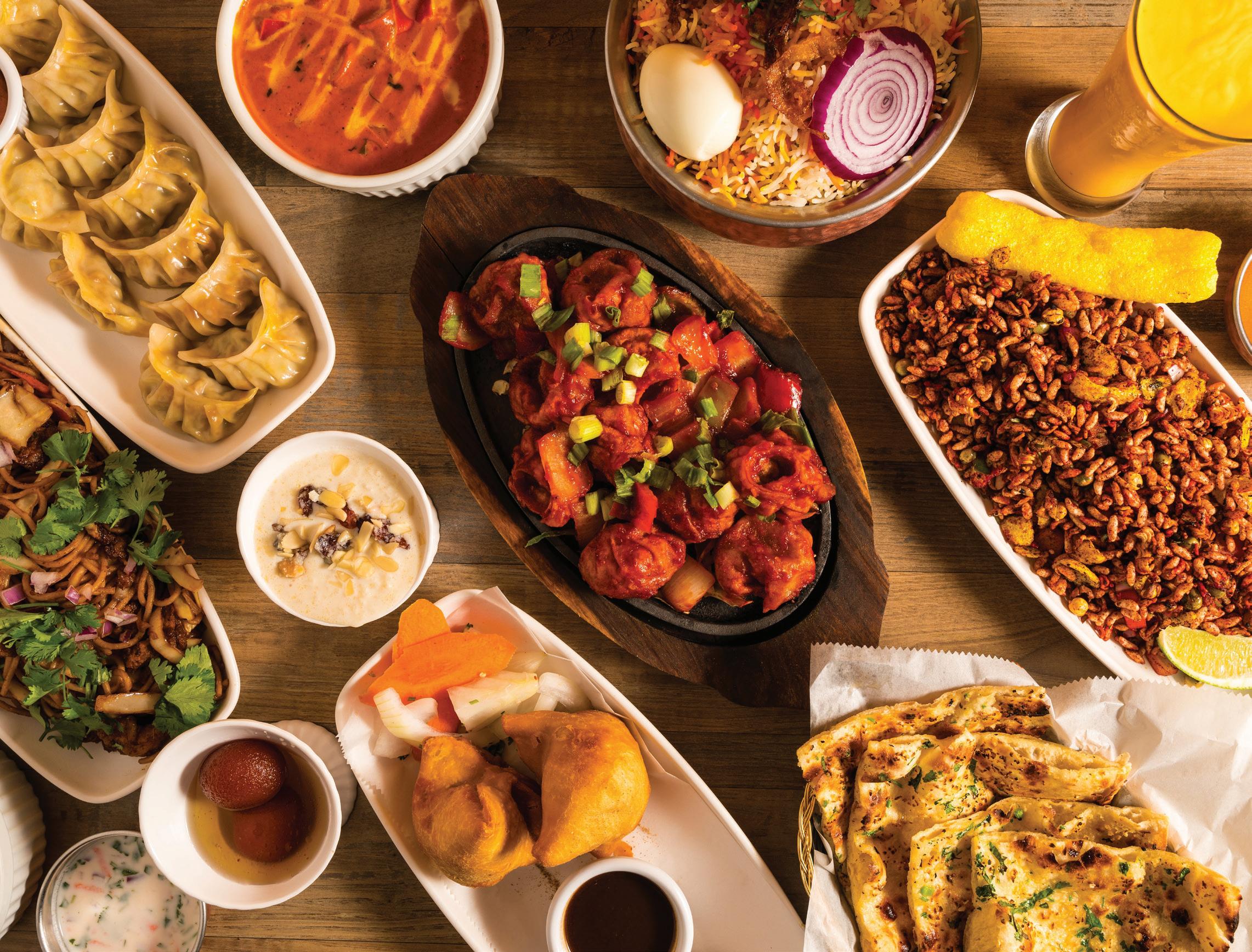
National Cuisine • Regional Cuisine • Classic Dishes • Daily Meals
National Cuisine • Regional Cuisine • Classic Dishes • Daily Meals
Dining Etiquette Recipes in 8 Categories • Special Occasion Foods
Dining Etiquette • Recipes in 8 Categories • Special Occasion Foods
Street Food • The German Pantry
Street Food • The Indian Pantry
Copyright © 2025 by World Trade Press
Publisher: Edward G. Hinkelman
Editors: Jenny Fretland VanVoorst, Brielle Burt, Felicia Topp
Designer: Journey Krajnik
Cover Image: JeniFoto/Shutterstock
No part of this publication may be reproduced, stored in a retrieval system, or transmitted in any form or by any means, electronic, mechanical, photocopying, recording, scanning, or otherwise, except as permitted under Section 107 or 108 of the 1976 United States Copyright Act, without either the prior written permission of the Publisher.
For information about permission to reproduce selections from this report, please contact Permissions: permissions@worldtradepress.com
For information about special discounts for bulk purchases, please contact Sales: sales@worldtradepress.com
ISBN: 978-1-60780-084-2
www.TheGlobalKitchen.com www.worldtradepress.com
World Trade Press, 616 E. Eighth St., Ste. 7, Traverse City, MI 49686


1. Aatu Kaal (Leg of Lamb) Soup
2. Aloo Bonda (Fried Savory Balls)
3. Aloo Gobi
4.
5. Beef Vindaloo
6. Beetroot Pachadi
7. Bhatura
8. Bhel Puri (Puffed Rice Snack)
9. Bhindi Masala
10. Bhutta (Indian Grilled Corn)
11. Carrot Coriander Soup
12. Chapati
13. Chicken Biryani
14. Chicken Tikka Masala
15. Cucumber Raita
16. Dahi Bhalla
17. Dal Shorba (Lentil Soup
18. Dhokla (Steamed Spongy Cake)
19. Dosa (Crepes)
20. Dum Aloo
21. Fish Moolie (Fish Stew)
22. Fried Green Tomato Salad
23. Fruit Salad
24. Goan Prawn Curry
25. Green Moong Sprouts Salad
26. Gujiya (Fruit Pasties)
27. Gulab Jamun (Fried Rosewater Syrup Balls)
28. Hyderabadi Biryani (Spicy Rice)
29. Jalebi (Fried Sweet)
30. Kachumber Salad
31. Kanji Vada (Mung Bean Fritters in Mustard Water)
32. Kashmiri Pulao
33. Kesar Peda (Milk Balls)
34. Kheema Baingan Bharta (Ground Meat and Eggplant)
35. Kheer (Rice Pudding)
36. Kopra Pak (Coconut and Milk Squares)
37. Kosambari
38. Kulcha
39. Laddu (Sphere-Shaped Sweets)
40. Malai Kofta
41. Mango Rice
42. Mooli Raita (Radish and Yogurt Salad)
43. Murgh Makhani (Butter Chicken)
44. Murukku (Fried Rice Spirals)
45. Mutton Korma with Cashews
46. Naan
47. Pakora (Fried Snack)
48. Palak Paneer
49. Panchmel Dal
50. Paneer Scramble
51. Papadum (Crunchy Lentil Wafer)
52. Paratha
53. Paya Soup
54. Pea and Spinach Coconut Curry
55. Pulao with Shrimp and Coconut Milk
56. Puran Poli (Sweet Lentil Flatbread)
57. Puri
58. Rasam (Spicy South Indian Soup)
59. Rasgulla (Dumplings in Syrup)
60. Rogan Josh
61. Roomali Roti
62. Sambar (Lentil Stew)
63. Samosas (Filled Pastries)
64. Sandesh
65. Seviya Kheer (Vermicelli Rice Pudding)
66. Spicy Aloo
67. Tamarind Rice
68. Tandoori Chicken
69. Thepla
70. Vada (Dumplings)
71. Warm Cabbage Salad
72. Yogurt and Spinach Soup
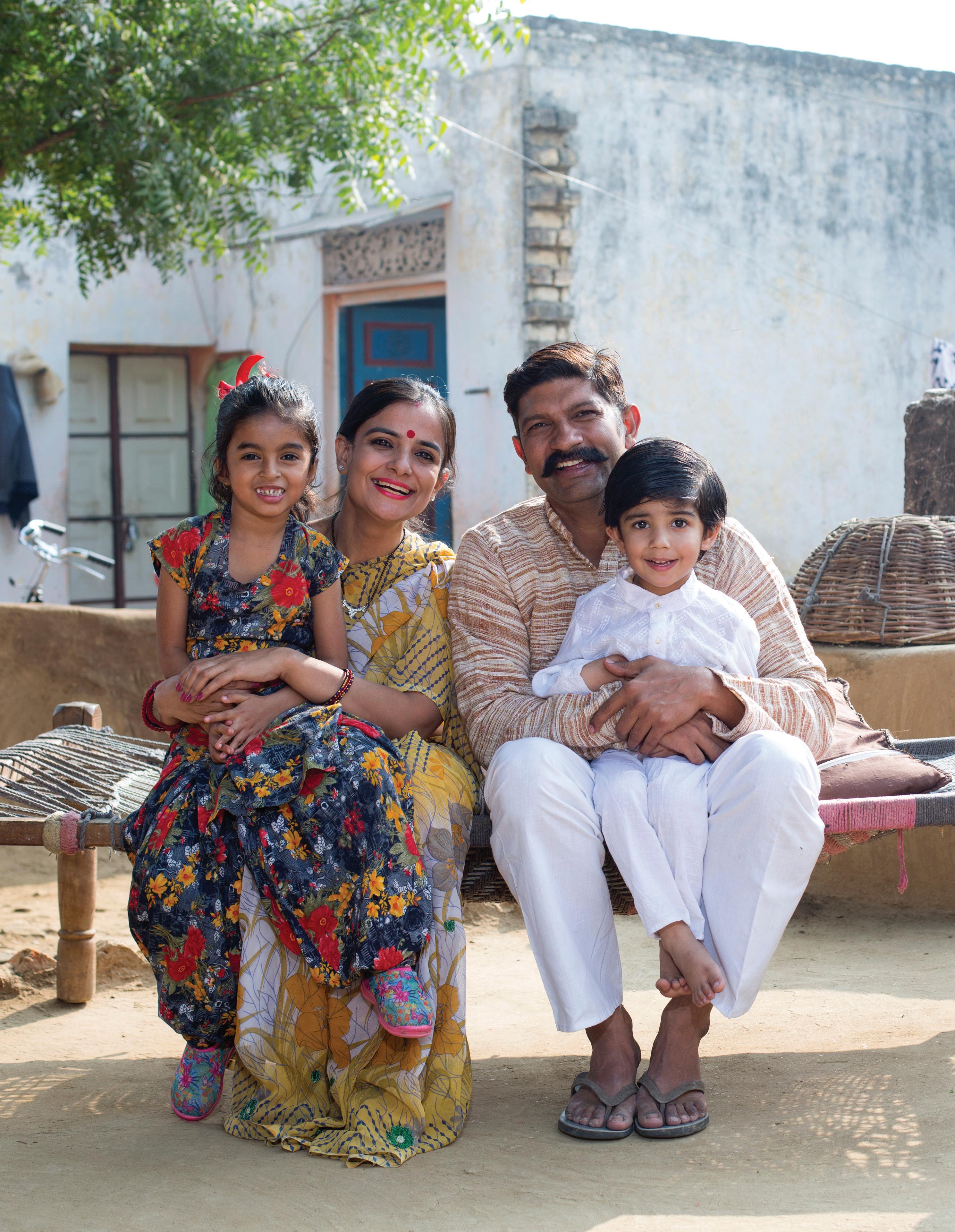
Welcome! This cookbook is a gateway to the extraordinary depth and diversity of Indian cuisine—one of the world’s most complex and historically rich culinary traditions. Drawing on more than three decades of research, this collection distills insights from a vast reference database built through meticulous study and direct contributions from Indian home cooks, regional experts, and professional chefs. The result is not merely a compilation of recipes but a curated guide to understanding how geography, history, trade, religion, and cultural exchange have shaped what we recognize today as Indian cuisine.al cooking while acknowledging the innovations of modern kitchens. From ancient Ayurvedic principles and and regions. This breadth is intentional: it allows users to grasp not only how Indian cuisine varies from Kashmir to Kerala but also why those variations exist.
Unlike many contemporary cookbooks that emphasize narrative or personality, this volume is grounded in a more informational approach. Our entries prioritize context and accuracy over anecdote, giving readers a clear understanding of ingredients, techniques, and regional distinctions. Whether you are a culinary historithat invite both learning and experimentation.
This is not a personal memoir or a stylized homage. It is a resource: comprehensive, structured, and built to last. As Indian cuisine continues to evolve globally, this work serves as a record of its roots and a guide to its ongoing expression.
A typical Indian dinner serves a curry atop a pile of steamed rice for the main course with a variety of side dishes. Most common are chutneys and pickles, made from a diverse range of ingredients including green mangoes, preserved lime peel, mint, green or red chilies, tamarind paste, tomatoes, coriander, garlic, and onions. Meals usually include bread, either leavened and clay-oven baked or unleavened and cooked on a griddle.
Indian desserts are numerous and include milkbased and fudge-like , sweetened chickpea laddu, milk balls soaked in sugar syrups (jamun, pera, rasgulla), coils of deep-fried batter soaked in sugar syrup (jalebis), rich fruit-and-nut sweets (halwa), and ice cream made with nuts and spices ( ).
Alcohol is prohibited in most of India’s states,
beer-making exist. The Mising and Adi tribes of northern India make a rice beer called apong, palm wines are made in Andrah Pradesh, and in
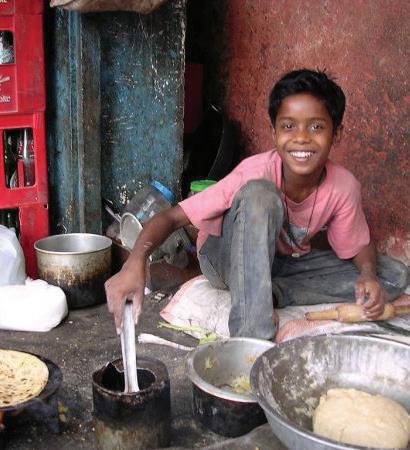
with fresh herbs and chilies is nearly endless, though most curries include a base of coriander, turmeric, and cumin,meat or vegetable dishes, which are served “dry” (coating the ingredients with very little liquid) or “wet” (suspended in a sauce of yogurt, coconut milk, or ghee).
In India, as in many countries, there is a rough divide between northern and southern cuisines, with dozens oftween. Northern cuisine is characterized by a preference naan and roti, rich the south tends toward soupy lentil and vegetable curries served with rice. This distinction, however, does not even begin to scratch the surface of India’s culinary diversity.

the northern idiom: naan, samosas, dry curries, and grilled meat dishes. The large global Indian diaspora has popularized Indian cuisine throughout the world, particularly in the United Kingdom and the United States.
Situated at the base of the Himalayas, the Kashmir Valley is a picturesque and fertile region framed by rugged mountains that historically helped to keep out invading forces. After the Turco-Mongol Mughals invaded in the 14th century, the long rule of Kashmiri Hindus—and to a lesser extent Buddhists—ended. The Mughals saffron, and tea. Rice grows well in the region and is the staple grain, though bread is also consumed. Perhaps more than any other region in India, Kashmiri cuisine is marked by a love of meat, particularly mutton, a halal meat introduced by Muslim Mughal rulers. Kashmir also is home to wazwan, a multicourse meal of meat dishes served with rice, salads, pickles, and dips. This feast is an important part of Kashmiri Muslim identity and is often served at special occasions including weddings.
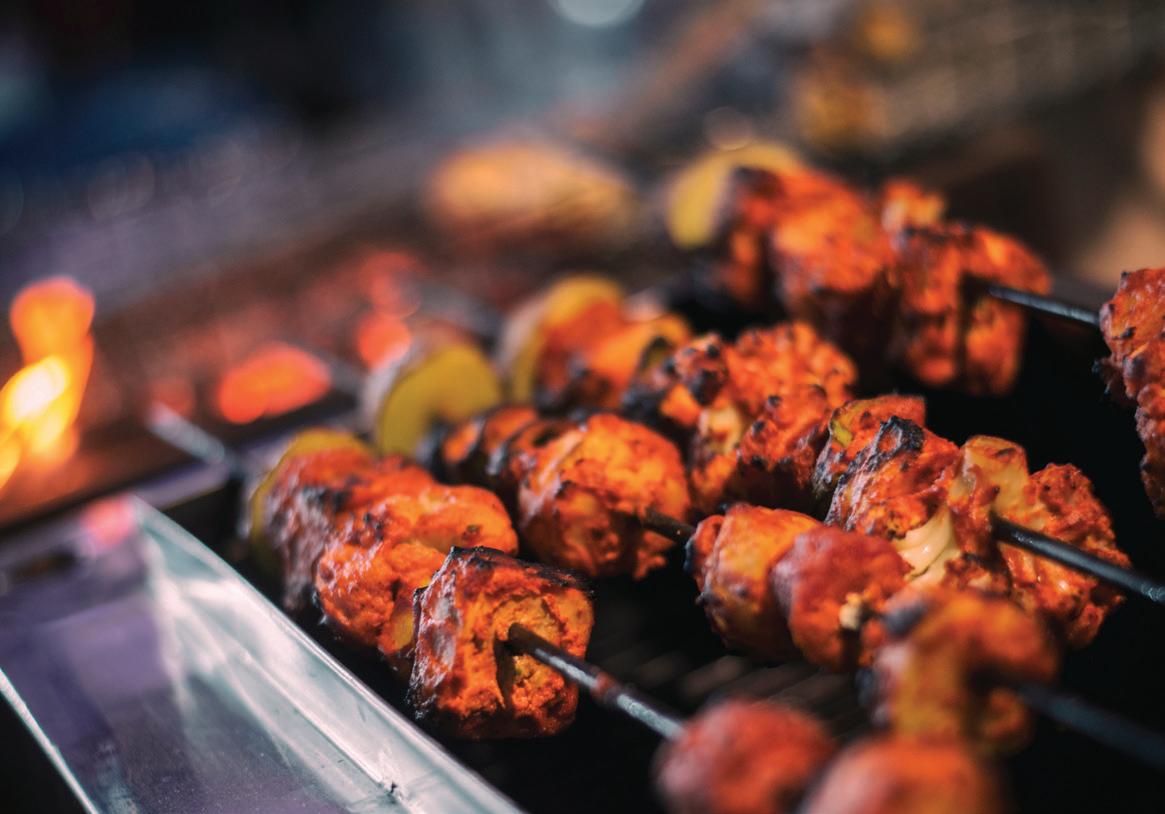
Rogan Josh – One of Kashmir’s signature dishes, this Mughal-style curried meat dish combines braised lamb in a fragrant sauce made of onions, yogurt, garlic, ginger, and aromatic spices. It has a rich red color from deseeded chile pepper, giving it a mild heat, and is one of the main dishes in wazwan.
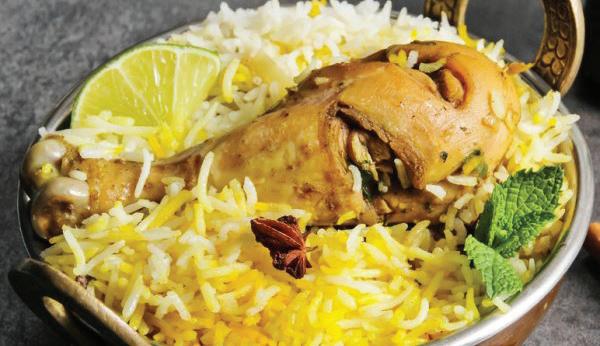
Fried Green Tomato Salad – Fried green tomatoes are dressed in curry powder, cilantro, and lemon or lime juice for this dish.
Fruit Salad – Seasonal fruits are a popular part of Indian meals.

Chicken Biryani – This biryani dish is made with chicken marinated in spices and yogurt that is cooked with basmati rice.
Fish Moolie Stew – This spicy south Asian stew inHyderabadi Biryani – Biryani is a combination of basmati rice and spices for a dish traditionally served for of Hyderabad and is made from lamb or mutton.
Pulao with Shrimp and Coconut Milk – Pulao is a rice dish made with basmati rice, aromatic spices, and herbs and may include a combination of vegetables, seafood, or chicken.
Tamarind Rice – Tamarind is very commonly used in India, especially in the cuisine of southern India.
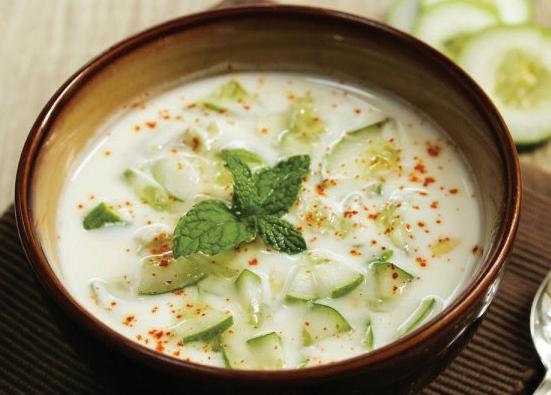
Chapati –en with curries.
Cucumber Raita – This is a popular yogurt side dish that has a cooling effect when eaten alongside spicy dishes.
Dosa – A savory crepe from southern India, a dosa is made from fermented rice and lentil dough that is Dosas with chutneys.
Mango Rice – Basmati or jasmine rice combine with mango, cashews, and traditional spices of southern India, such as curry powder, turmeric, and mint, for this recipe.
Sambar – Sambar is a lentil soup served alongside many dishes.
In households throughout India, it is common to eat at a low table, seated on a cushion or short stool, or at a Western-style table with chairs. Hands are the primary utensil during meals, and they are washed before and after every meal. The left hand—which is associated with bathroom hygiene and feet—is never used to touch food or to point at others.
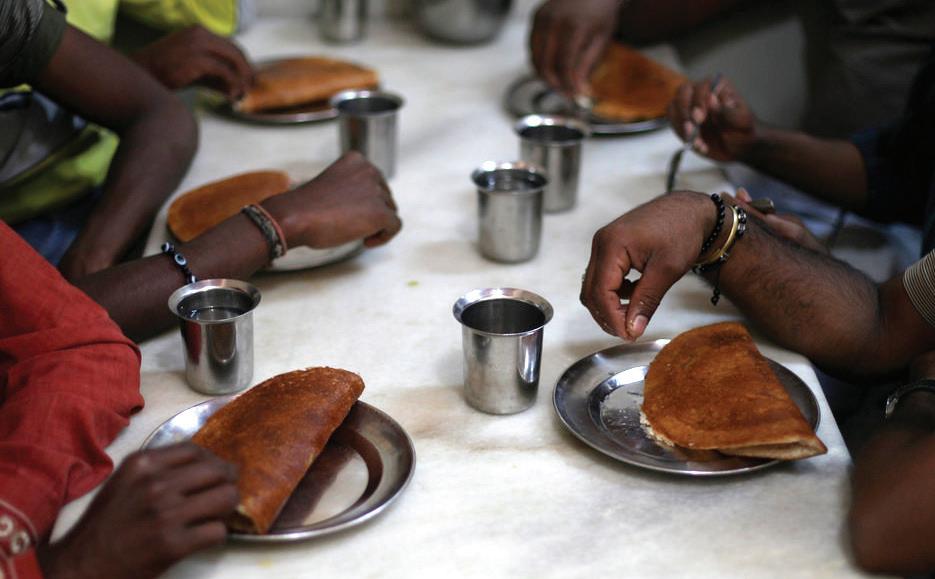
Place settings often include a clean banana leaf or a large plate. Meals are served communally and include a variety of dishes, most of which are typically vegetarian. Indians serve themselves from communal dishes with a spoon. Unless dining with close family, friends, or a partner, Indians carefully avoid contaminating other people’s food with their saliva, an offense known as jutha. Where rice is common,
pick up food, thus avoiding touching the wet food as much as possible. When using banana leaves, Indians
distaste or dissatisfaction with the meal. Indians do not say “thank you” at the end of a meal, as this is considered overly formal and suggests that the gesture of a good meal was unexpected, as if the diner and host were distant acquaintances or even strangers. Instead, Indians compliment the food to show appreciation, and they perhaps offer to host a dinner in the future.
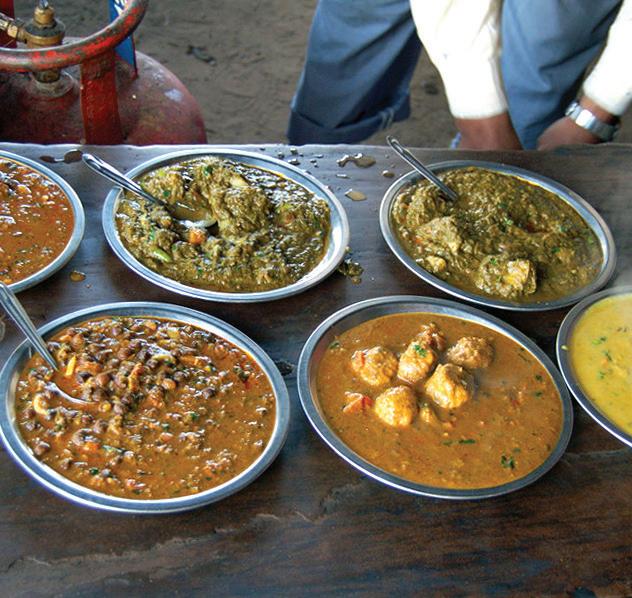
Guests sometimes bring gifts for the host and the hosts’ children when invited to dinner parties, but only a small, inexpensive token, such as sweets. Dinner parties generally begin 15 to 30 minutes later than stated. Depending on the occasion, the guest of
wear around his or her neck, but it is usually removed after a few minutes in a show the guest of honor, then to men, followed by serve men and then themselves. Hosts will usually offer diners more of a dish, to makeplates go empty.
-
try’s vast regional and cultural diversity. Every city and state in India has its own unique street food offerings, often representing centuries-old culinary traditions. From bustling metropolises such as Mumbai and Delhi to smaller towns, street food is a central part of daily
The food is often prepared fresh on the spot by street vendors, who sell everything from savory snacks to sweet treats and refreshing drinks. Spices and herbs including cumin, coriander, tamarind, and chilies play a vital role in Indian street food, contributing to its
Street food stalls, also known as thelas, are omnipresent in India, particularly in busy markets, transportation hubs, and tourist areas. These stalls are not just about food but are also social spaces where locals and tourists gather to enjoy a quick bite. Whether it’s breakfast, lunch, or a late-night snack, India’s street food scene thrives at all hours. From the famous chaat dishes of the north to the dosas of the south, Indian street food is a must-try experience for anyone wanting to explore the country’s culinary heritage.
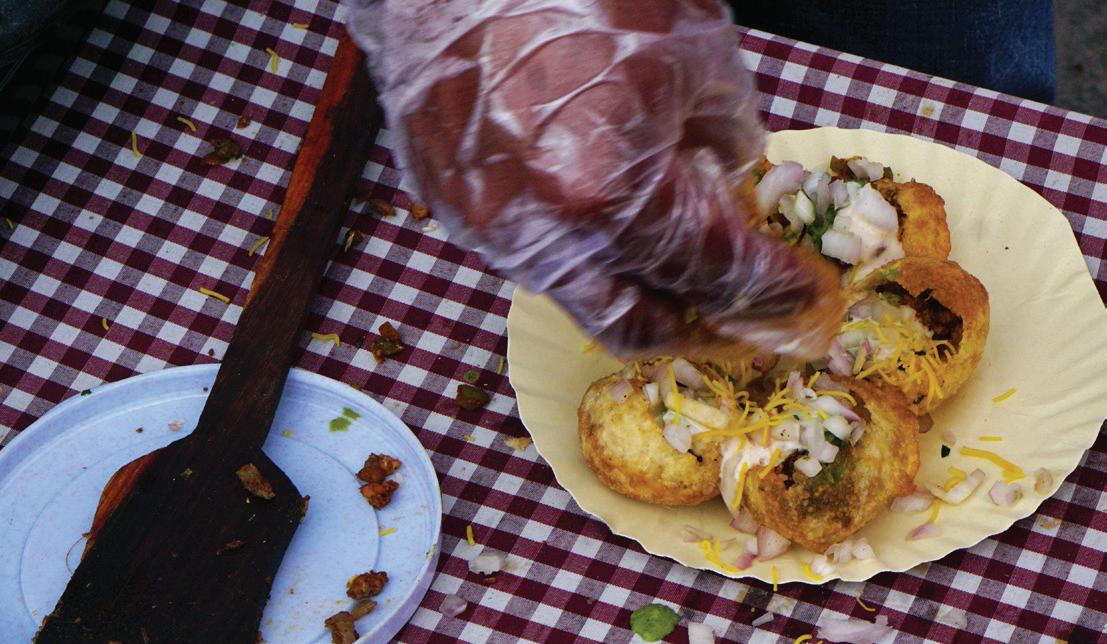
Pani puri, also known as golgappa in North India, consists of crispy, hollow puris (deep-fried puffed bread) chickpeas in spicy tamarind water. Variations mightter such as mint, chile pepper, lemon, or tomato. This iconic snack originated in North India but is now available all over the country, especially in large cities.
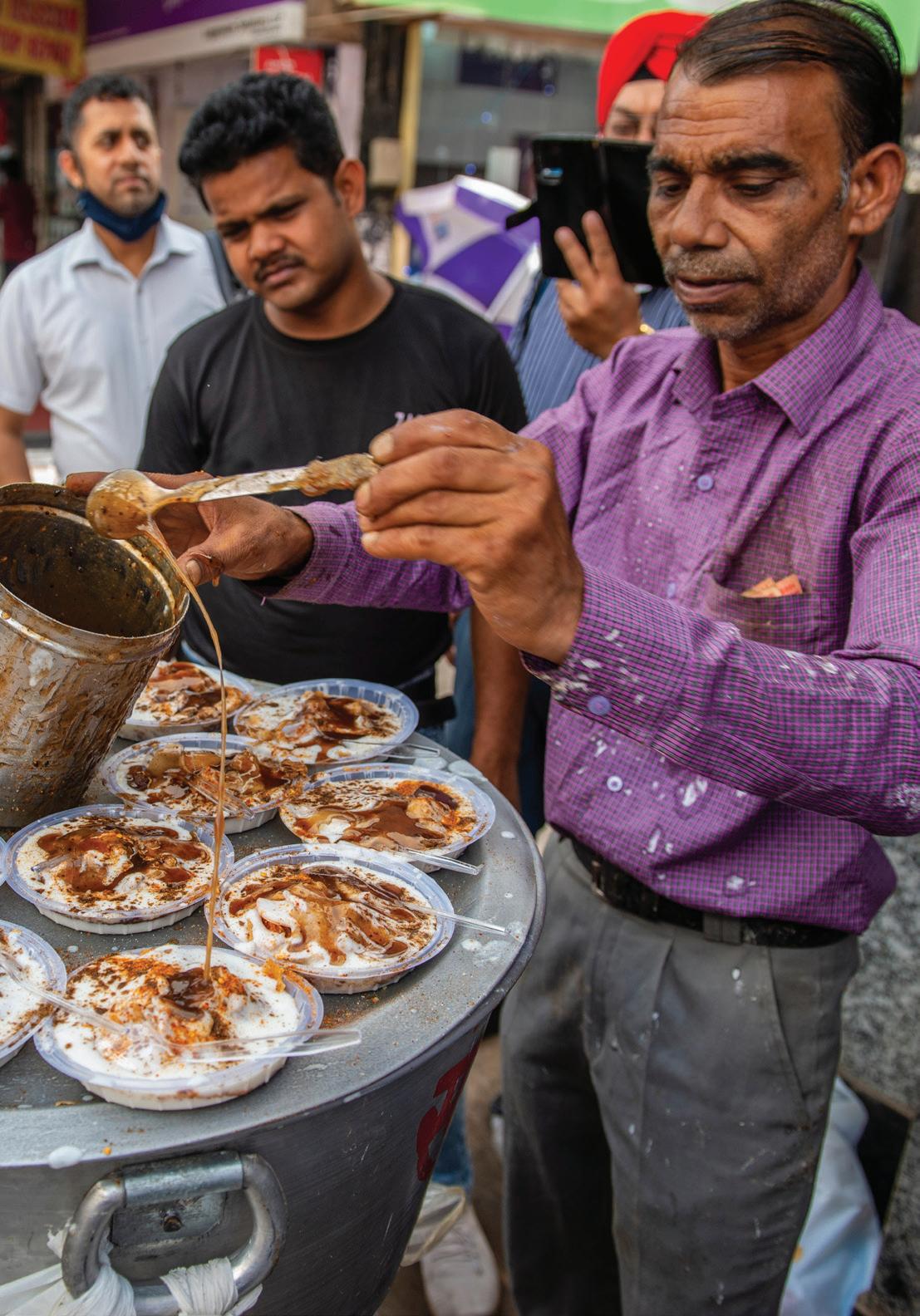
Dahi bhalla is a popular North Indian street food that consists of soft, spongy lentil fritters soaked in creamyneys, such as tamarind and mint. The fritters, made from ground urad dal fried until golden and then soaked in water to become tender. Afterward, they are immersed in cool, thick yogurt and garnished with spices such as cumin powder, chili powder, and black salt.
Dahi bhalla is often served with a drizzle of sweet tamarind chutney and tangy mint chutney, balancing is commonly sold by street vendors, particularly in bustling markets and during festivals, including Holi and Diwali. Its refreshing and light texture makes it a favorite snack, especially in the hot Indian summers.
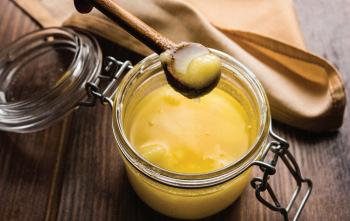
it, and has been used in India for thousands of years. Ghee is widely used in South Indian cuisine, including rice dishes, sweets, and for tempering curries.
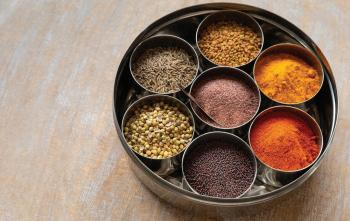
Many Indian kitchens have a masala dabba, a round spice box containing essential spices used in everyday cooking. Typical spices include turmeric, cumin seed, cardamom, coriander seed, chili powder, black mustard seeds, and garam masala. Garam masala is a spice mix that can vary in ingredients but typically consists of ground spices such as cloves, cinnamon, cardamoms, cumin, coriander, nutmeg, bay leaf, mace, and black pepper.
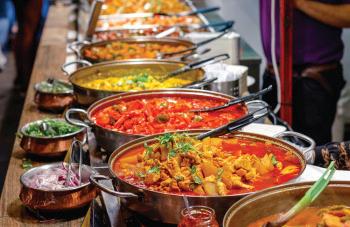
Curry is a thick sauce, cooked with vegetables and meat and served with rice or bread. It can also be the name for a dish, with Indian known for its many curries. Chicken tikka masala, butter chicken, pork vindaloo, and chicken korma are just a few popular curries.
Wild tea—Camellia sinensis—is native to eastern and northern India, and it is believed that indigenous groups made -
were brewing tea for spiritual purposes while Ayurvedic medicinal practices included brews made from tea and spices such as licorice, ginger, and mint, precursors to today’s masala chai.
It wasn’t until the early 19th century, however, that tea began to be cultivated and commercialized. At the time, the British East India Company was seeking to wean itself off its dependence on Chinese tea, which monopolistically quenched the enormous collective thirst of British tea drinkers. In the 1820s, British traders in India’s northeastern Assam region noticed locals drinking a brew made from tea that grew wild in the jungle. An initial shipment of “Assam tea” to London in 1839 proved so popular that it
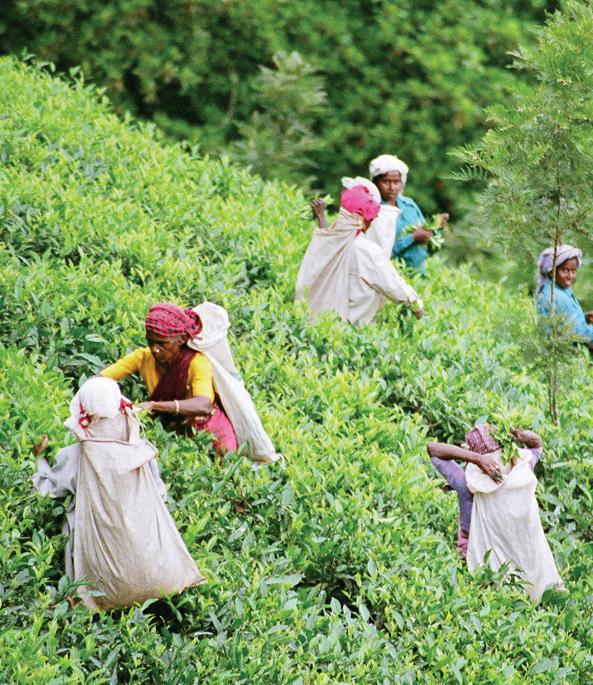
the Assam Company, and jump-started the production of this bold, intense black tea in the Assam lowlands. Shortly after, the British began experimenting with Chinese black tea saplings in Darjeeling, a sparsely populated region in the Himalayan foothills. The resulting tea was
As a result of these “discoveries,” vast tracts of hilly territory were given over to tea cultivation, with British planters using local inhabitants as indentured servants. By 1900, British India and Ceylon together produced 90 percent of the tea consumed in Britain. However, Indians drank very little tea. To promote domestic consumption, the British-owned Indian Tea Association spearheaded a campaign that encouraged factories and mines to provide workers with tea breaks and supported tea vendors on India’s expanding railways.
By the mid-20th century, India had become one of the world’s top producers of tea. Along the way, tea became a nationally popular beverage, with 90 percent of Indians drinking the affordable and addictive brew on a regular basis.
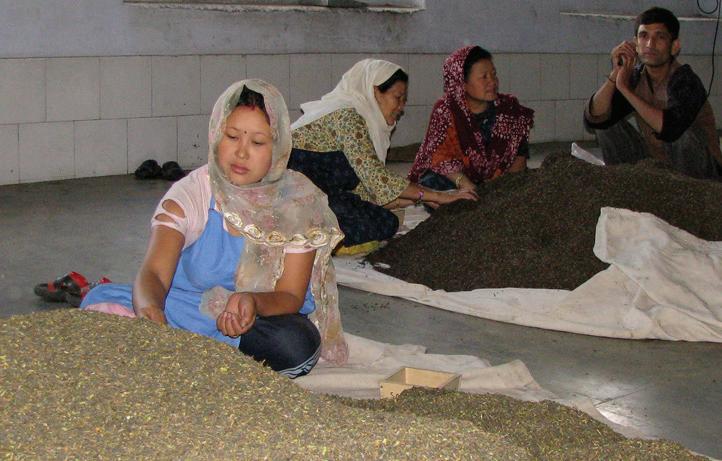
India’s main tea-growing regions include Assam and Darjeeling in the northeast and the lush Nilgiri District in the south, where fragrant Nilgiri tea is cultivated. Assam comprises around 50 percent of all tea grown in India. Until not long ago, only black teas were produced in India, but in recent years green, oolong, and white teas have emerged, particularly in Darjeeling. The world’s second largest tea producer after China, India is a world leader in terms of tea-growing techniques and cultivation-related technology although harvesting methods vary in different parts of the country. For
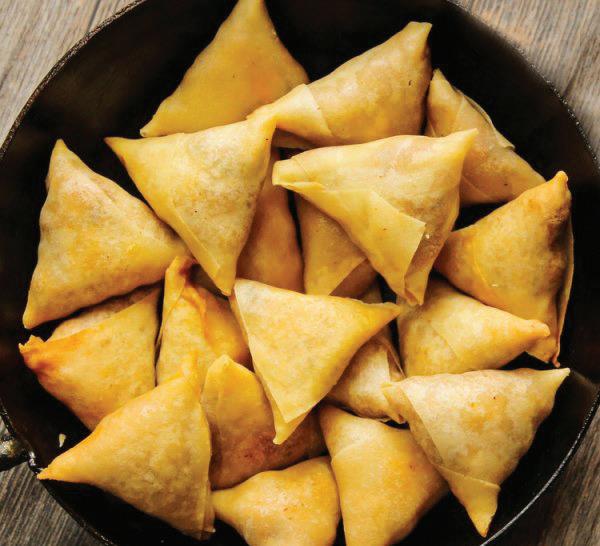
Prep Time: 35 minutes
Recipe Servings: 12
Cook Time: 25 minutes
Total Time: 1 hour
Dietary Considerations: Vegetarian, Vegan, Dairy Free, Kosher, Halal
referred to as sambusa or samboksa
peas and chopped carrots or kheema (minced meat). Samosas are best enjoyed within a few hours of cooking, while the pastry is still crisp.

Prep Time: 10 minutes Cook Time: 15 minutes Total Time: 25 minutes
Recipe Servings: 2-4
Dietary Considerations: Vegetarian, Gluten Free, Kosher, Halal
A simple side dish served alongside spicy meals, cucumber raita can be used to cool the tongue. It is made of yogurt, onion, and spices, and can also be served as a salad or dip.
Directions
Ingredients
1 big cucumber, cut into small pieces
Salt, to taste
1–1½ cups (240–360 ml) plain yogurt
4–6 green chilies
1 Tbsp (15 ml) grated coconut
1 Tbsp (15 ml) oil
½ tsp (2.5 ml) mustard seeds
A few curry leaves
1 Tbsp (15 ml) fresh coriander leaves (cilantro)
1. In a bowl, mix cucumber, onion, salt, and yogurt.
2. Grind chilies and coconut to a coarse paste and add to yogurt mixture.
3. Heat oil and fry mustard seeds and curry leaves.
4. Cool fried seasonings and then add to yogurt mixture.
5. Add fresh coriander leaves and serve.

Prep Time: 15 minutes
Cook Time: 24 minutes Total Time: 39 minutes
Recipe Servings: 4 Dietary Considerations: Vegetarian, Vegan, Gluten Free, Dairy Free, Kosher, Halal
Bhindi masala is a popular North Indian dish made with okra (called bhindi in Hindi), spices, and aromatics. and nutritional value. Bhindi Traditionally dry (without much gravy), bhindi masala is often served with chapati, naan, or rice. Its vibrant homestyle Indian cooking.
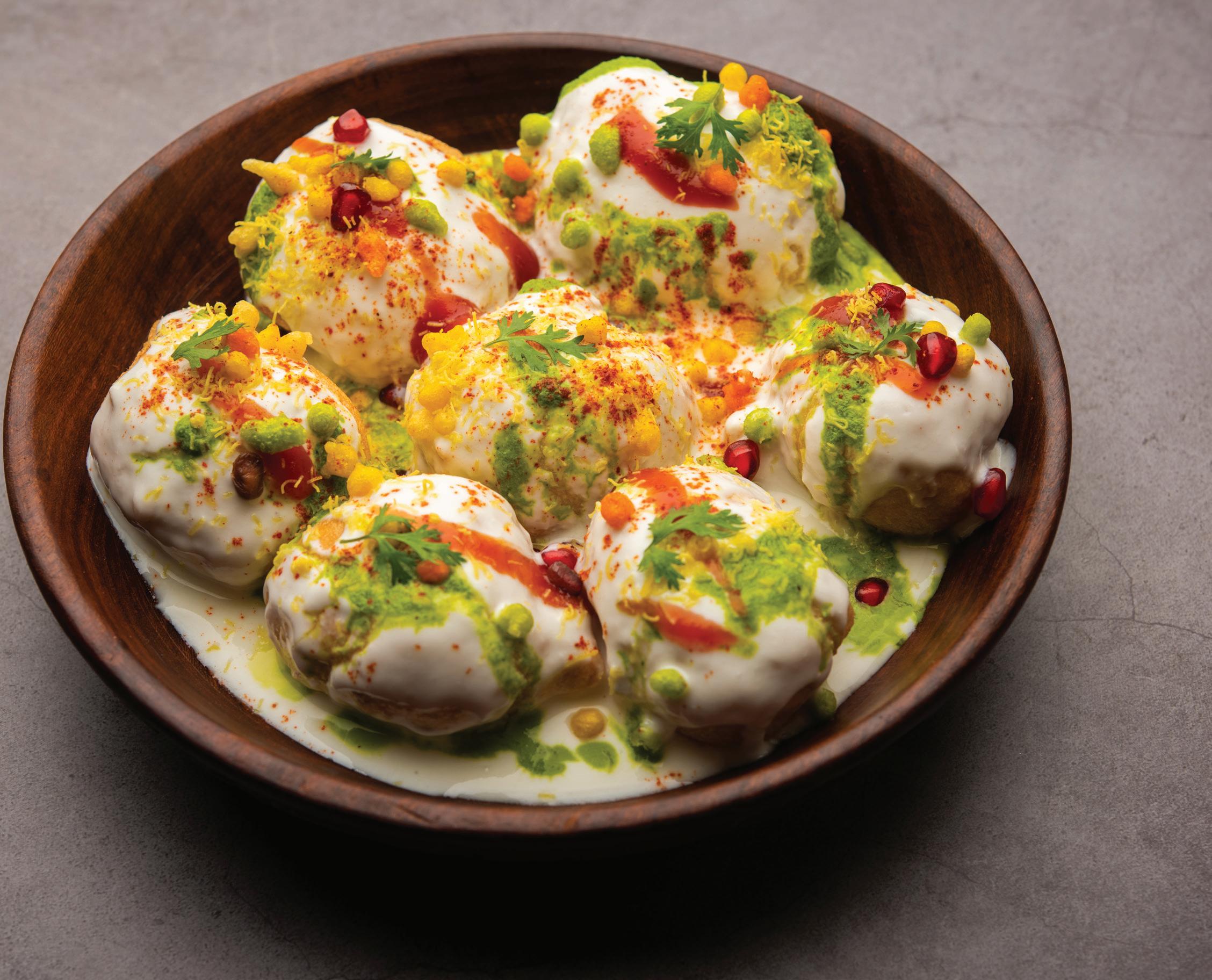
Prep Time: 20 minutes Rest Time: 2 hours Cook Time: 30 minutes Total Time: 2 hours 50 minutes
Recipe Servings: 4-6
Dietary Considerations: Vegetarian, Gluten Free, Kosher, Halal
Dahi bhalla is a popular Indian dish that features soft, spongy bhallas (lentil dumplings) soaked in yogurt and topped with a variety of tangy and spicy chutneys. It is commonly served as an appetizer, side dish, or snack, especially during festivals and social gatherings. The dish combines rich, cooling yogurt with the heat and Dahi bhalla has its roots in North Indian cuisine, particularly in Delhi and Punjab, and has become popular across the country and beyond. Often enjoyed as a chaat (street food), it brings together a balance of textures, from the creamy yogurt to the crispiness of the bhallas, making it a delightful treat.

Prep Time: 10 minutes Cook Time: 0 minutes Total Time: 10 minutes
Recipe Servings: 4
Dietary Considerations: Vegetarian, Gluten Free, Kosher, Halal
Mooli raita in India is a refreshing and tangy dish that combines grated radish with creamy yogurt and Indian spices. It is a popular accompaniment to meals, balancing the heat and spice of main dishes with its cooling spices enhance the overall taste. This dish is particularly favored in North Indian cuisine, often served with parathas, biryanis, or as part of a larger meal.
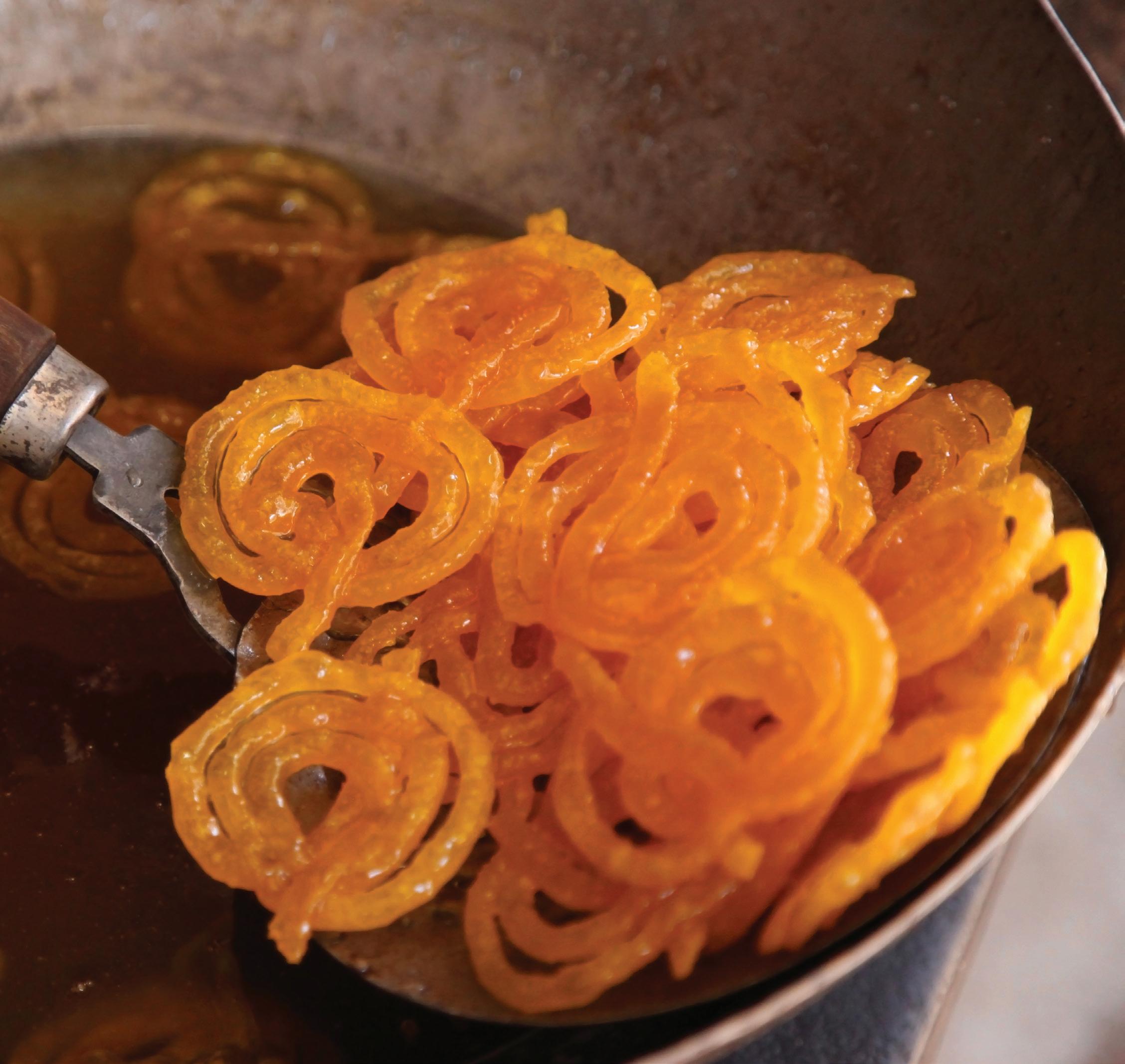
Prep Time: 30 minutes Rest Time: 8 hours
Cook Time: 30 minutes
Total Time: 9 hours
Recipe Servings: 7 Dietary Considerations: Vegetarian, Vegan, Dairy Free, Kosher, Halal
This centuries-old fried sweet is a roadside favorite throughout much of South Asia. Jalebi consists of wheatsometimes added to the syrup. Jalebi is served either warm or cold.
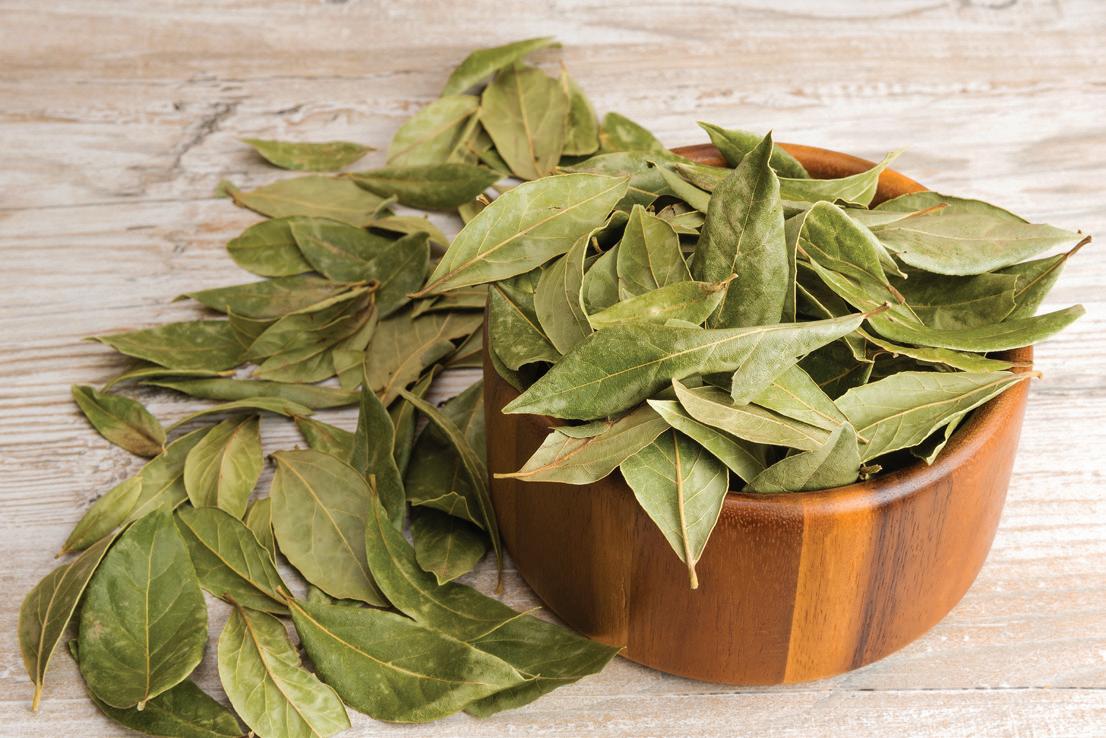
Description
Bay leaves are the aromatic leaves of several varieties of trees.
Origin
Bay leaves originated in Asia Minor.
Varieties
There are a number of different types of bay leaves, such as:
• Bay laurel (Laurus nobilis, Lauraceae)
• California bay leaf (Umbellularia californica, Lauraceae)
• Indian bay leaf (Cinnamomum tamala, Lauraceae)
• West Indian bay leaf (Pimenta racemose, Myrtaceae)
• Indonesian bay leaf (Syzgium polyanthum, Myrtaceae)
• Mexican bay leaf (Litsea glaucenscens, Lauraceae)
also contain many active compounds, including cineol, a-pinine, ß-pinene, myrcene, limonene, linalool, methyl chavicol, nearl, a-terpineol, geranyl acetate, eugenol, and chavicol. Additionally, bay leaves contain lauric and caffeic acids.
cluding soups, stews, braises, and patés, or they can be steeped as a tea. They are often used with thyme, parsley, and oregano and are an important ingredient in many French, Turkish, and Moroccan dishes. Bay leaves are typically not eaten but are removed from the dish before serving.
Fresh bay leaves are in season year-round in the climates where they grow. Dried bay leaves are available worldwide year-round.
• Garlands of bay laurels have historically been used to honor scholars and poets, and they have traditionally been associated with good luck.
prolong their shelf life. They contain the essential oil eugenol, as well as myrcene, a component of many essential oils.
Fresh bay leaves are a rich source of vitamin C, folic acid, and vitamin A. They have small amounts of ni-
well as some copper, potassium, calcium, manganese, iron, selenium, zinc, and magnesium. Bay leaves
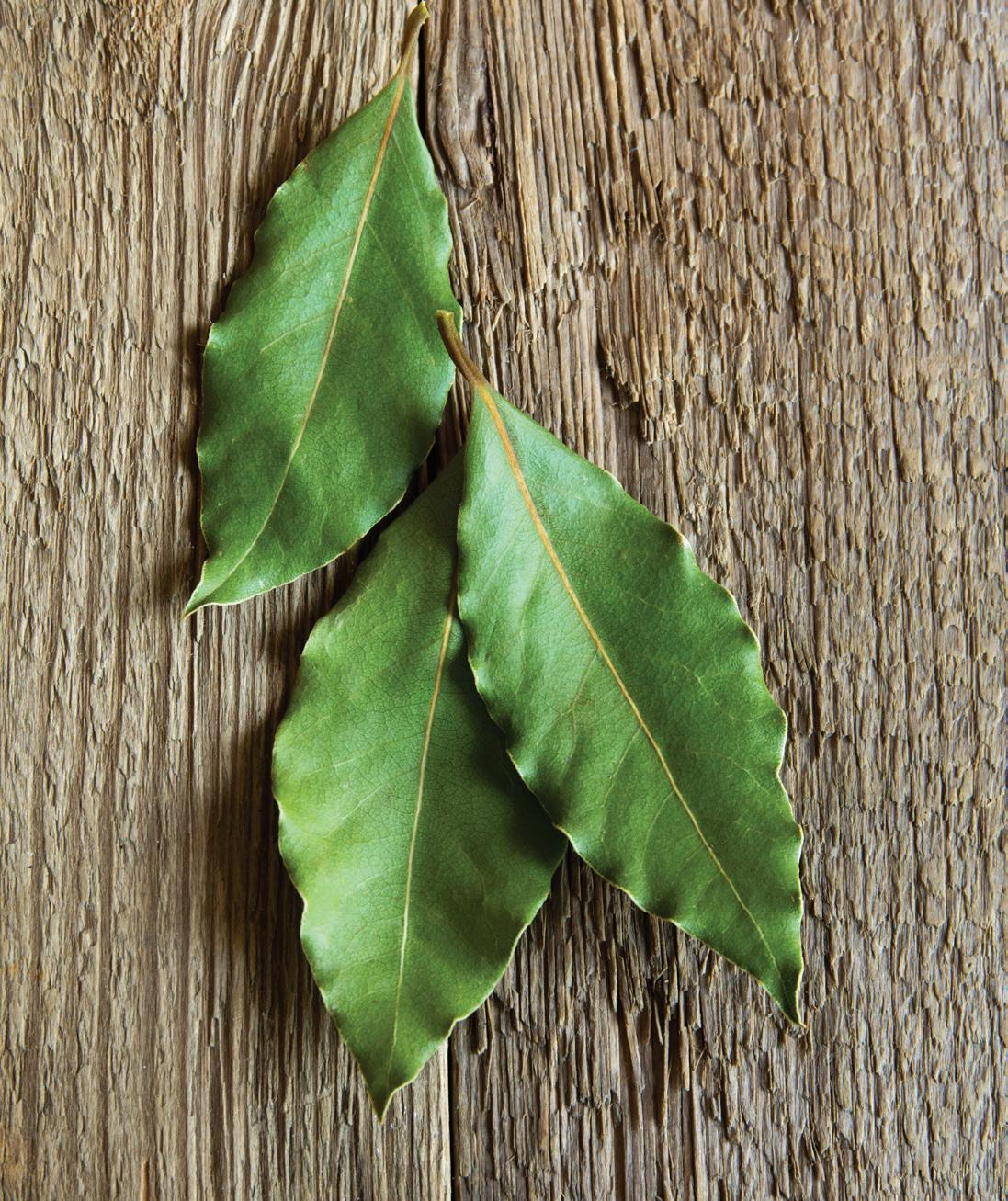
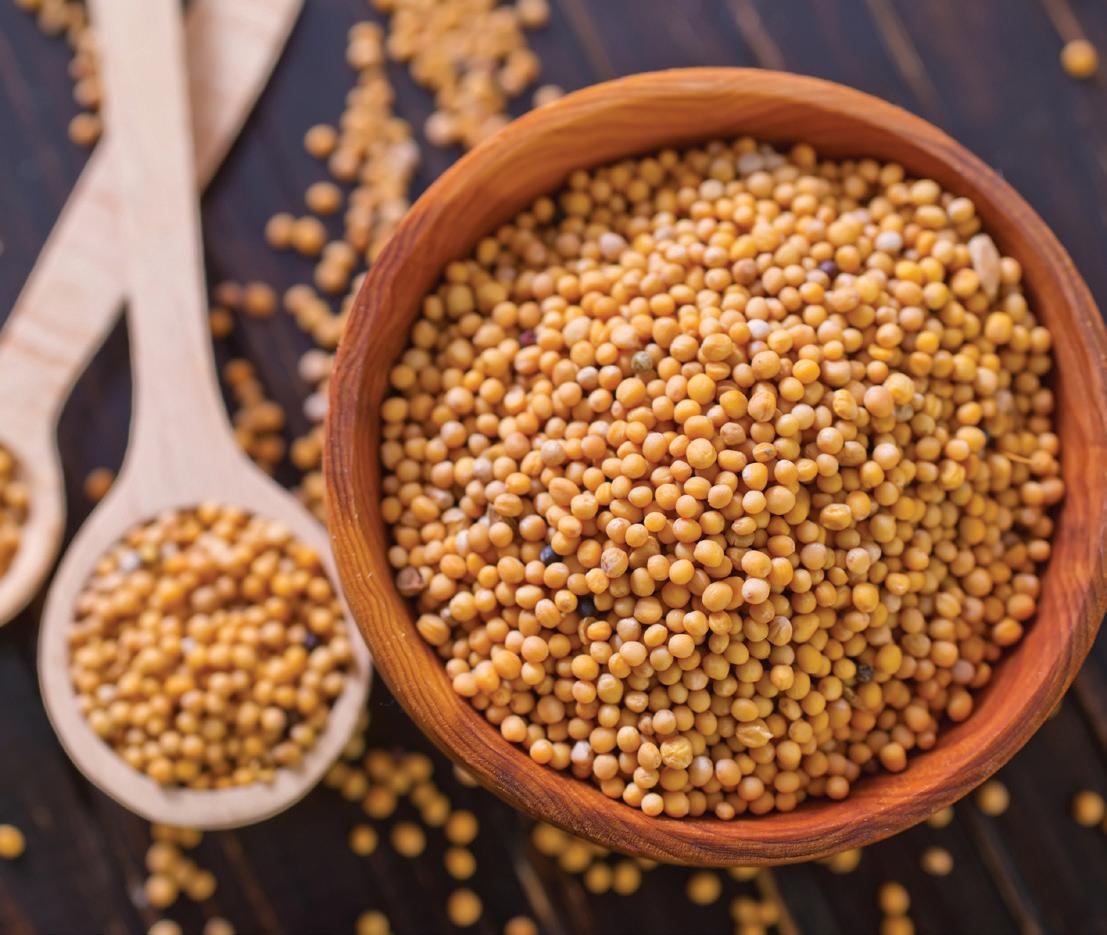
Description
Mustard seeds are the seed of the mustard plant, which is also grown for its greens. Belonging to the genera Brassica or Sinapis, mustard seeds are small, oily, and pungently spicy. They can be black, brown, red, yellow or white.
Origin
sauce by mixing the crushed seeds with grape must. The mixture was called “burning must,” or mustum ardens in Latin, which was truncated to mustard.
There are three principal kinds of mustard: black (Brassica nigra), white (B. alba), and brown (B. juncea).
Mustard seeds can have a mild or strong spiciness, and white mustard is typically the least pungent while black mustard can be burning. Mustard prepared in water is stronger than mustard prepared in vinegar. Mustard tastes tart, sweet, and hot in varying degrees.
Mustard seeds are rich in the minerals selenium, phosphorus, magnesium, iron, zinc, and calcium. They are excellent sources of niacin, thiamine, pyri-
Dry mustard, also called mustard powder, is made from crushed mustard seeds and is used as a spice -
pared mustard, wherein the crushed seeds are suspended in water or vinegar. Mustard is a popular condiment on sandwiches, hamburgers, pretzels, hot
barbecue sauce, and hollandaise sauce.
Mustard seeds are available year-round. They are left on the stalk to dry and are usually harvested in the summer.
• The chemical warfare agent mustard gas is unrelated to the mustard plant and was named because of its aromatic peppery smell that is reminiscent of mustard.
• White mustard plants have been experimentally employed in the detection of chemical and nerve agents. For instance, the mustard plant metabolizes and stores VX gas at higher concentrations than surrounding soil, making it easier to test and identify sites where the nerve agent has been deployed.

World Trade Press is a publishing and information products company specializing in country-based information company’s mission is to strengthen mutual understanding across cultures by lowering the information barriers that prevent individuals and organizations from succeeding in the international arena. World Trade Press clients include academic and public libraries, universities, global businesses, government agencies, global logis-
World Trade Press has developed and maintains more than a dozen large-scale online databases of country and city information covering business, culture, food, import/export, local living, and travel for 174 world countries and 201 world cities.
World Trade Press has published multiple editions of more than 100 physical reference books, country business guides, books for international trade and logistics, world atlases for travel and logistics, and world and country wall maps.
World Trade Press has developed and maintains more than two dozen professional-level country e-reports and e-books for each of 174 countries. These products cover topics such as business culture, cost of living, demographics, education, environment, holidays and festivals, government, money and banking, music, quality of life, religion, security, social indicators, and more.
All World Trade Press products—from our databases and e-content reports to our physical books, maps, and atlases—are created through the collaboration of a dedicated internal staff of researchers, writers, editors, and cartographers and more than 100 external subject-matter experts to create world-class content in theel. To view a partial list of contributors to titles in The Global Kitchen series, go to www.TheGlobalKitchen. com/contributors.html.
Learn more about World Trade Press and its products at www.WorldTradePress.com.
Check
